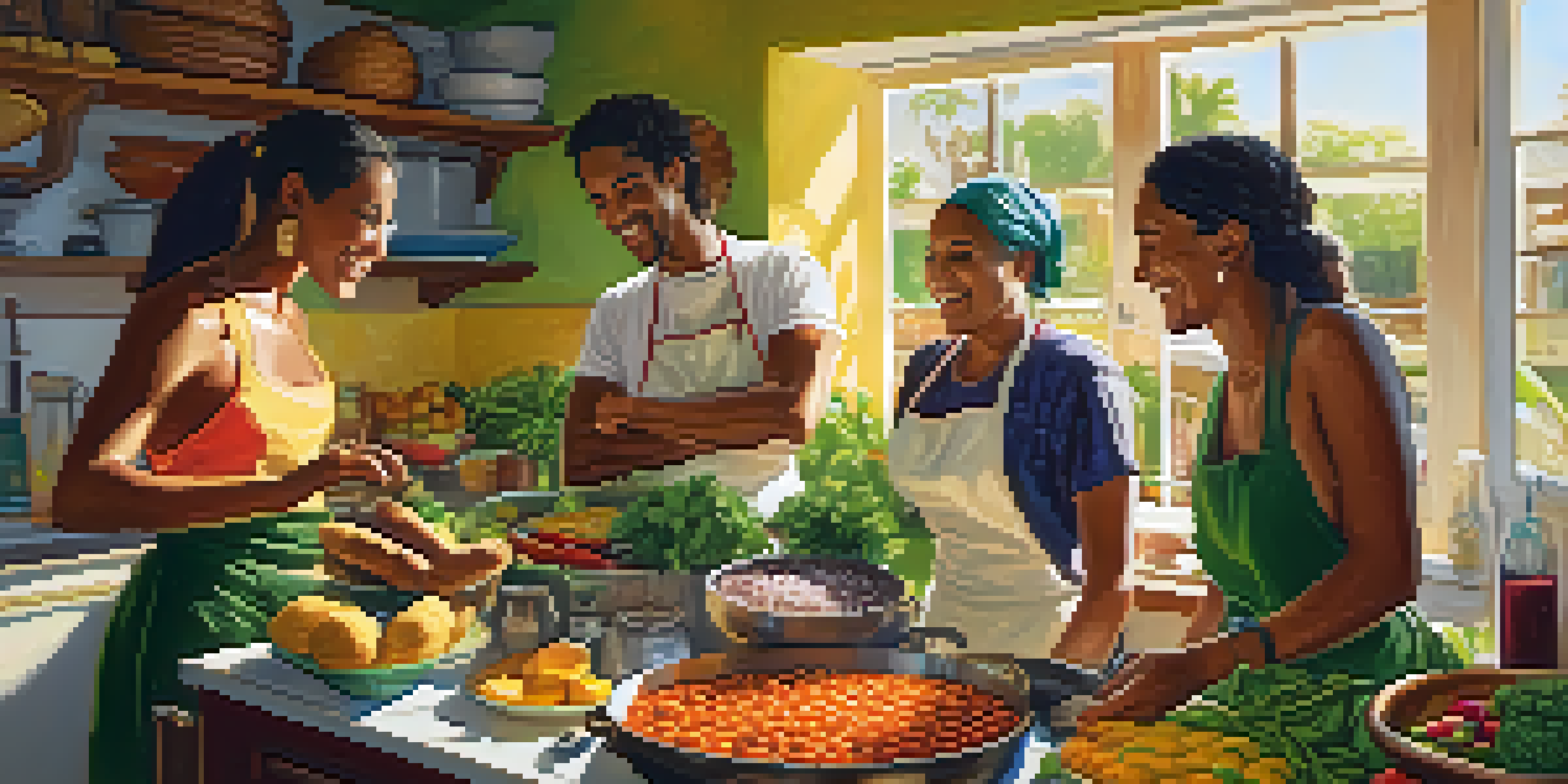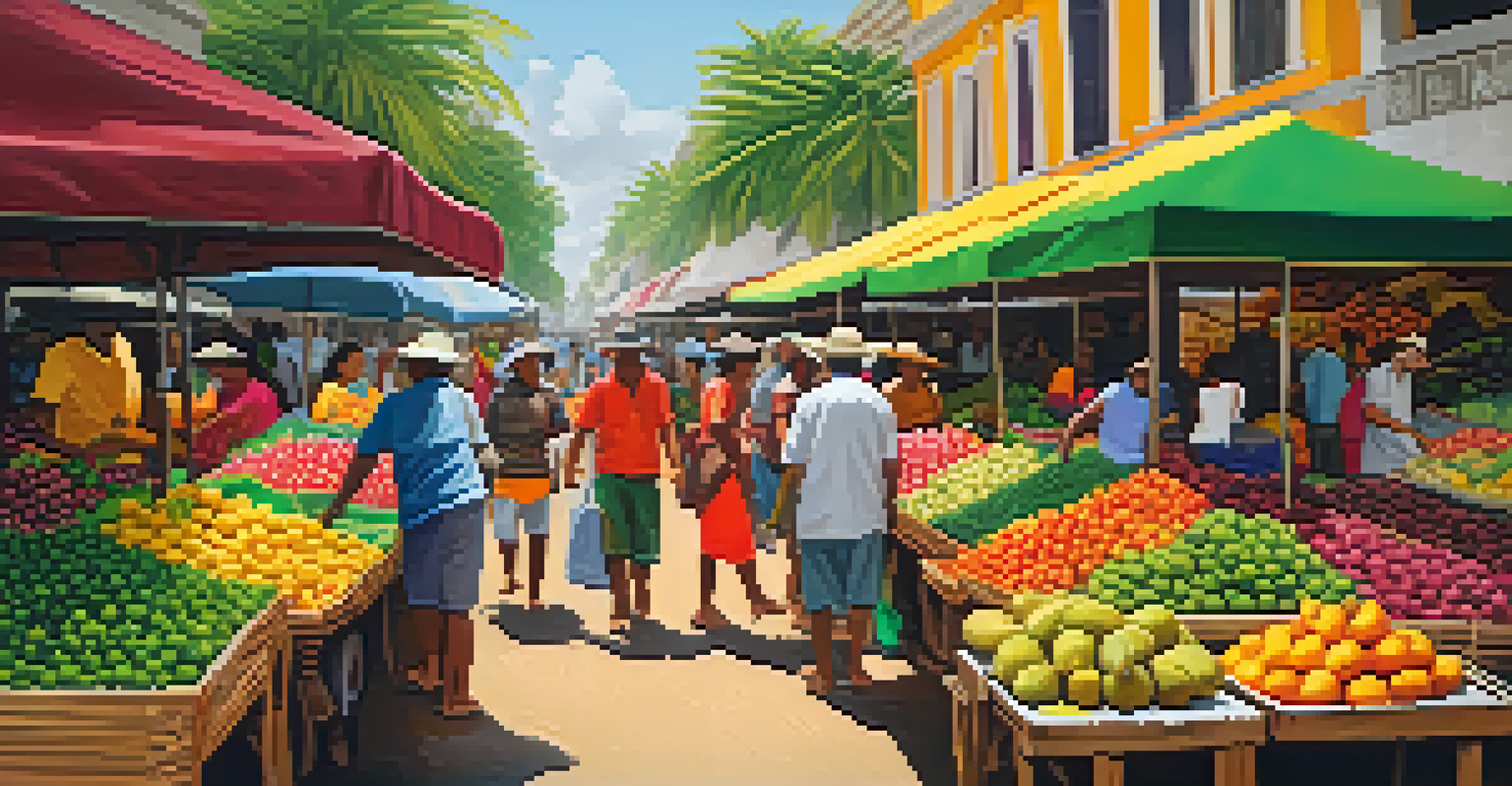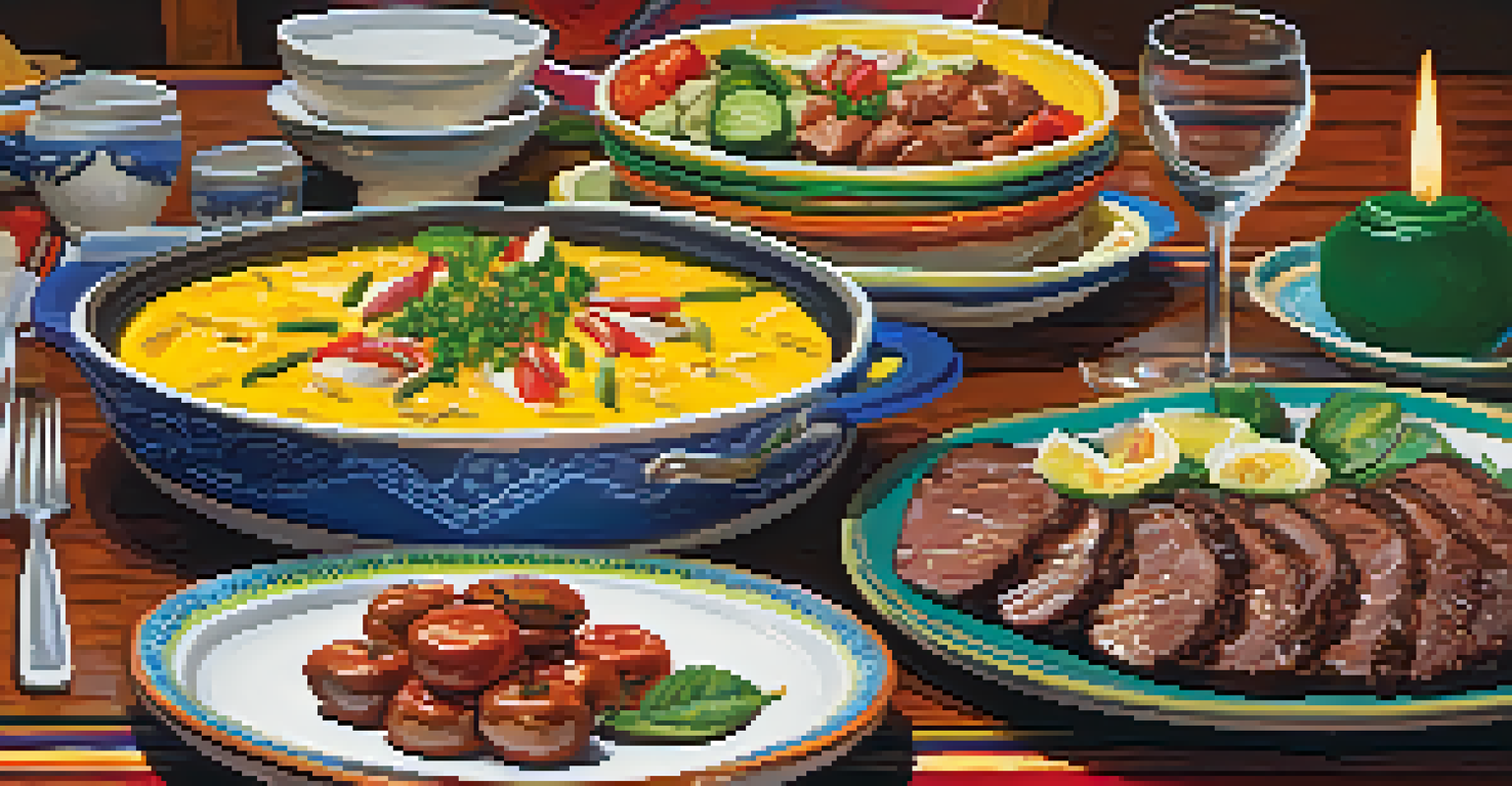Exploring Brazil: Cooking Classes Focused on Regional Cuisine

The Essence of Brazilian Cuisine: A Culinary Mosaic
Brazilian cuisine is a vibrant tapestry woven from its diverse cultures, regions, and ingredients. With influences from Indigenous tribes, Portuguese colonizers, and African descendants, each dish tells a story of the land and its people. From the spicy moqueca of Bahia to the comforting feijoada of Rio, the flavors encapsulate the heart and soul of Brazil.
Food is our common ground, a universal experience.
Exploring this culinary diversity through cooking classes offers a hands-on experience that deepens your appreciation for these unique dishes. You'll not only learn how to prepare them but also understand the cultural significance behind each recipe. It’s like traveling through Brazil without leaving the kitchen!
These classes often take place in local homes or community kitchens, creating an intimate setting that fosters connection and learning. You’ll find that cooking in a group enhances the experience, as participants share stories, laughter, and, of course, delicious food.
Popular Regions to Explore: A Culinary Journey
Brazil's vast landscape means each region has its own culinary specialties. The North, with its Amazonian ingredients, offers dishes like tacacá and pato no tucupi, while the Southeast is famous for its churrasco and pastel. Each area provides a unique opportunity to delve into local cooking traditions and flavors.

The South, known for its German and Italian influences, serves up hearty meals like chimarrão and polenta. Meanwhile, the Northeast dazzles with its seafood dishes and vibrant street food culture, such as acarajé. Attending cooking classes in these regions allows you to savor the local produce and learn traditional cooking techniques.
Diverse Flavors Reflect Brazil's Culture
Brazilian cuisine showcases a rich blend of Indigenous, Portuguese, and African influences, creating unique dishes that tell the stories of its diverse regions.
As you travel from region to region, you'll notice the distinct ingredients and cooking methods that define each area. This culinary journey not only fills your stomach but also enriches your understanding of Brazil’s cultural heritage.
Essential Ingredients: The Heart of Brazilian Cooking
When diving into Brazilian cuisine, certain ingredients are essential to creating authentic flavors. Staples like rice, beans, and manioc (cassava) are found in many dishes, offering a hearty base for meals. Additionally, fresh herbs like cilantro and parsley add vibrant notes that enhance the overall taste.
Cooking is like love. It should be entered into with abandon or not at all.
Fruits also play a significant role, with tropical varieties like açaí, guava, and passion fruit frequently featured in both savory and sweet dishes. Learning how to incorporate these ingredients in your cooking can elevate your culinary creations and transport your taste buds straight to Brazil.
Participating in cooking classes will often provide you with insight into sourcing these ingredients locally, whether it’s visiting markets or farmers. This not only supports local economies but also ensures your dishes are as fresh and flavorful as possible.
Hands-On Experience: Cooking Classes to Consider
Brazil offers a plethora of cooking classes that cater to all skill levels and interests. Many classes are designed for tourists, providing a glimpse into local life while teaching you how to prepare traditional meals. Cooking schools in cities like São Paulo and Rio de Janeiro are popular choices for both locals and visitors alike.
You can find classes that focus on specific regional cuisines or even those that highlight street food essentials. Whether you’re kneading dough for pão de queijo or simmering a rich vat of feijoada, these immersive experiences are both educational and entertaining.
Cooking Classes Enhance Cultural Insight
Participating in cooking classes provides hands-on experiences that deepen your understanding of Brazilian culinary traditions and the significance of local ingredients.
Moreover, many classes include a market tour, allowing participants to handpick ingredients before heading into the kitchen. This not only adds to the authenticity of the experience but also helps you gain confidence in selecting quality produce.
Cultural Insights: Stories Behind the Dishes
Each dish in Brazilian cuisine carries a story, often reflecting the history and traditions of its people. Cooking classes frequently emphasize these narratives, providing context that enhances your understanding of the food. For instance, learning about the origins of moqueca reveals the fusion of Indigenous and African cultures.
Instructors often share personal anecdotes about their childhood memories tied to certain recipes, creating a familial bond amongst participants. This storytelling aspect adds depth to your culinary journey, turning a simple cooking lesson into a rich cultural experience.
Understanding the cultural significance of each dish encourages a greater appreciation for the food you prepare. It becomes more than just a meal; it transforms into a celebration of Brazilian heritage and community.
Savoring Your Creations: The Joy of Sharing Meals
After putting in the hard work of preparing a meal, the best part is gathering around the table to enjoy your creations. This communal aspect of Brazilian dining is deeply rooted in the culture, emphasizing the importance of sharing food with family and friends. Cooking classes often culminate in a shared meal, allowing participants to taste each other's dishes.
As you savor the flavors, you'll find that each bite carries the essence of the region and the stories you’ve learned throughout the class. This shared experience fosters connections, not only with those you cook with but also with the culture of Brazil itself.
Sharing Meals Strengthens Connections
The communal aspect of dining in Brazil emphasizes the joy of sharing meals, fostering connections and conversations about the cultural heritage behind each dish.
Moreover, sharing your meals with others can spark conversations about the recipes and techniques you’ve learned, further enriching your culinary journey. It’s a delightful way to keep the Brazilian spirit alive, even after the class ends.
Continuing the Culinary Adventure: Beyond the Classroom
The journey of exploring Brazilian cuisine doesn’t have to end with a cooking class. Many participants find themselves inspired to recreate the dishes at home, experimenting with flavors and techniques they’ve learned. Collecting recipes and sharing them with family and friends ensures that the culinary adventure continues long after you leave Brazil.
Additionally, many cooking schools offer online classes, allowing you to connect with Brazilian chefs from anywhere in the world. This flexibility means you can keep honing your skills and expanding your knowledge of the cuisine, all while enjoying the comforts of your own kitchen.

Lastly, exploring Brazilian cookbooks and food blogs can further immerse you in the flavors and traditions of this vibrant culture. By continuing to cook and learn, you become an ambassador of Brazilian cuisine, sharing its rich heritage with others in your community.